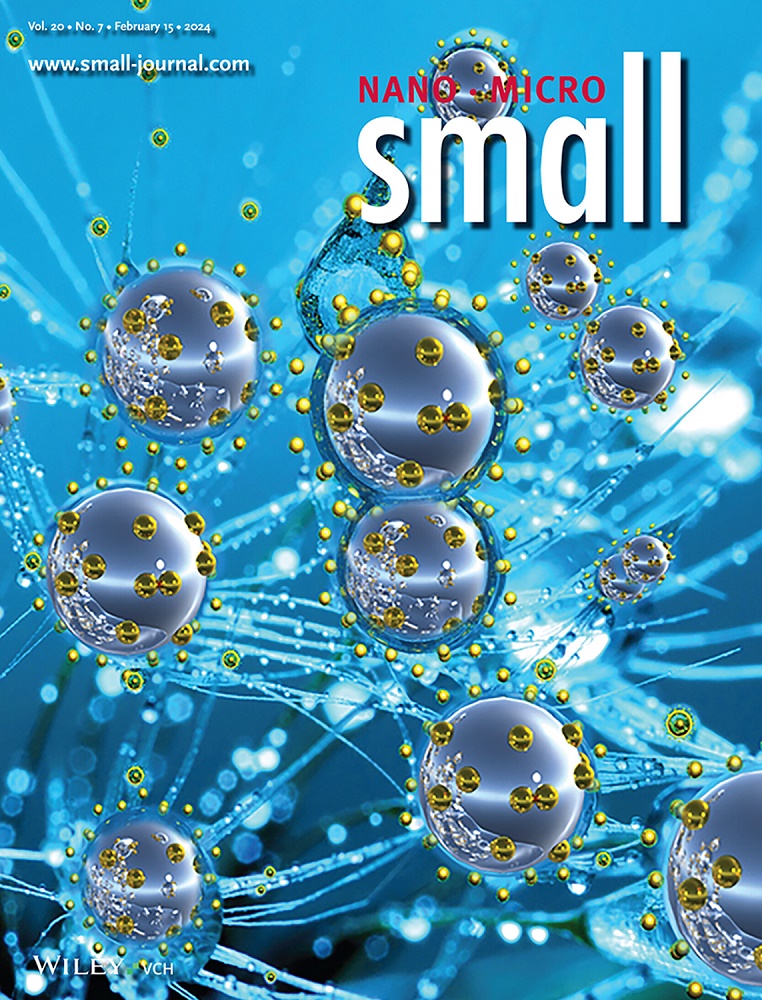Ordered Dynamic Networks Proton Exchange Membrane for Humidity-Resilient High-Performance Fuel Cells.
IF 12.1
2区 材料科学
Q1 CHEMISTRY, MULTIDISCIPLINARY
引用次数: 0
Abstract
Maintaining proton conductivity of sulfonated proton exchange membranes (PEMs) under low humidity remains a critical challenge for fuel cell applications. This study presents an innovative interfacial engineering strategy through the integration of perfluorosulfonic acid nanofibers (PFSANF) with hydroxyl-functionalized Tröger's base polymer containing tertiary amine groups (HTB), constructing an ordered dynamic network membrane. The system achieves multi-level performance optimization via synergistic 3D hydrogen-bond networks and acid-base interactions: 1) Nanofiber create high-speed proton transport networks; 2) Hydroxyl and tertiary amine groups cooperatively enhance water retention while creating additional proton-hopping sites. The resulting ordered dynamic architecture demonstrates remarkable humidity-adaptive proton conduction, achieving a proton conductivity of 123 mS cm-1 - 1.9 times higher than commercial Nafion NC at 90 °C and 30% relative humidity (RH). The optimized membrane demonstrates outstanding peak power density of 1.2 W cm- 2 in H2/O2 fuel cells. This innovative interfacial engineering approach establishes a new paradigm for developing humidity-resilient proton exchange membranes through synergistic molecular design and ordered nanostructure.用于抗湿高性能燃料电池的有序动态网络质子交换膜。
在低湿度条件下保持磺化质子交换膜(PEMs)的质子导电性仍然是燃料电池应用的关键挑战。本研究提出了一种创新的界面工程策略,通过将全氟磺酸纳米纤维(PFSANF)与羟基功能化的含有叔胺基(HTB)的Tröger基聚合物集成,构建有序的动态网络膜。该系统通过协同的三维氢键网络和酸碱相互作用实现了多层次的性能优化:1)纳米纤维创建高速质子传输网络;2)羟基和叔胺基团协同增强保水性,同时产生额外的质子跳位。在90°C和30%相对湿度(RH)下,质子电导率达到123 mS cm-1,是商用Nafion NC的1.9倍。优化后的膜在H2/O2燃料电池中表现出1.2 W cm- 2的峰值功率密度。这种创新的界面工程方法为通过协同分子设计和有序纳米结构开发抗湿质子交换膜建立了新的范例。
本文章由计算机程序翻译,如有差异,请以英文原文为准。
求助全文
约1分钟内获得全文
求助全文
来源期刊

Small
工程技术-材料科学:综合
CiteScore
17.70
自引率
3.80%
发文量
1830
审稿时长
2.1 months
期刊介绍:
Small serves as an exceptional platform for both experimental and theoretical studies in fundamental and applied interdisciplinary research at the nano- and microscale. The journal offers a compelling mix of peer-reviewed Research Articles, Reviews, Perspectives, and Comments.
With a remarkable 2022 Journal Impact Factor of 13.3 (Journal Citation Reports from Clarivate Analytics, 2023), Small remains among the top multidisciplinary journals, covering a wide range of topics at the interface of materials science, chemistry, physics, engineering, medicine, and biology.
Small's readership includes biochemists, biologists, biomedical scientists, chemists, engineers, information technologists, materials scientists, physicists, and theoreticians alike.
 求助内容:
求助内容: 应助结果提醒方式:
应助结果提醒方式:


